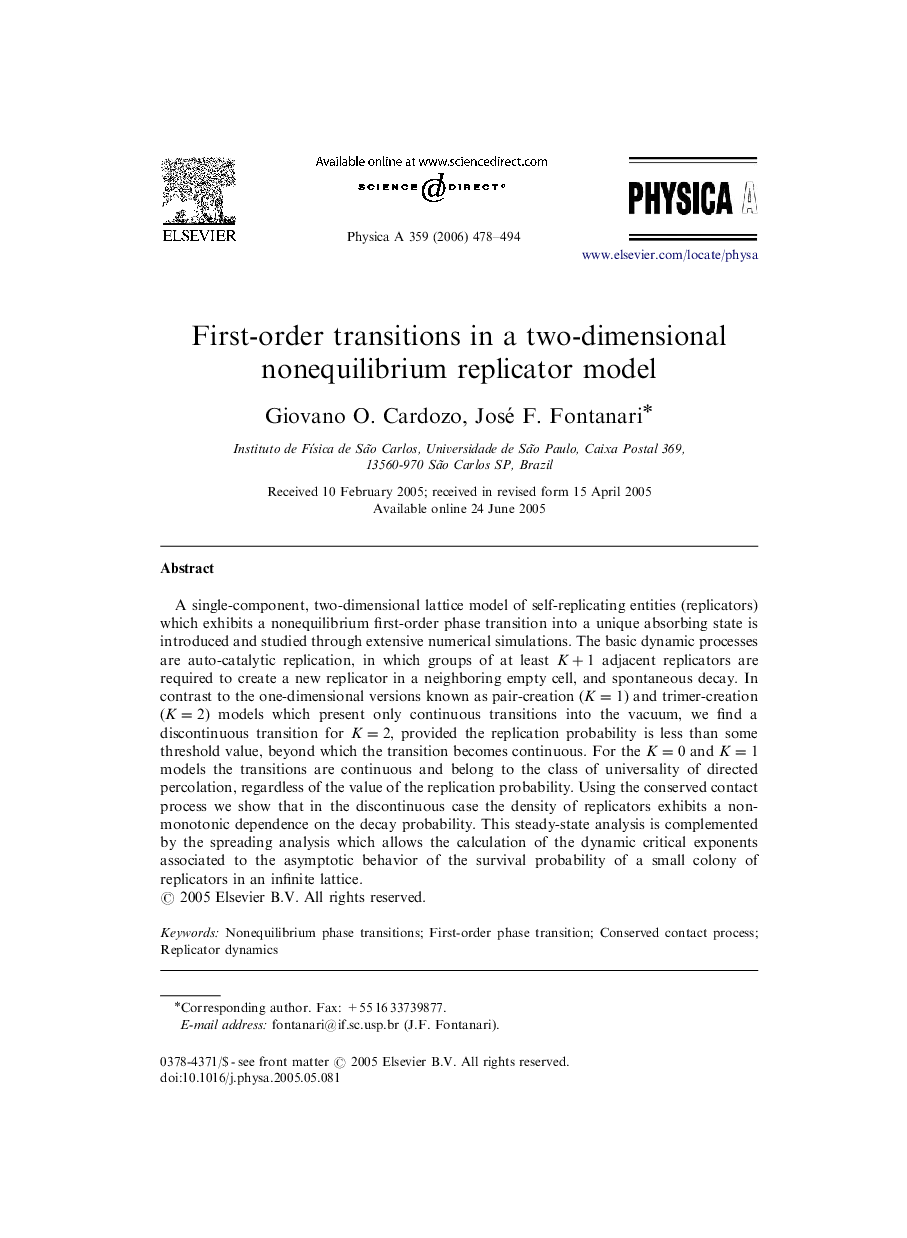| Article ID | Journal | Published Year | Pages | File Type |
|---|---|---|---|---|
| 978814 | Physica A: Statistical Mechanics and its Applications | 2006 | 17 Pages |
A single-component, two-dimensional lattice model of self-replicating entities (replicators) which exhibits a nonequilibrium first-order phase transition into a unique absorbing state is introduced and studied through extensive numerical simulations. The basic dynamic processes are auto-catalytic replication, in which groups of at least K+1K+1 adjacent replicators are required to create a new replicator in a neighboring empty cell, and spontaneous decay. In contrast to the one-dimensional versions known as pair-creation (K=1K=1) and trimer-creation (K=2K=2) models which present only continuous transitions into the vacuum, we find a discontinuous transition for K=2K=2, provided the replication probability is less than some threshold value, beyond which the transition becomes continuous. For the K=0K=0 and K=1K=1 models the transitions are continuous and belong to the class of universality of directed percolation, regardless of the value of the replication probability. Using the conserved contact process we show that in the discontinuous case the density of replicators exhibits a non-monotonic dependence on the decay probability. This steady-state analysis is complemented by the spreading analysis which allows the calculation of the dynamic critical exponents associated to the asymptotic behavior of the survival probability of a small colony of replicators in an infinite lattice.
